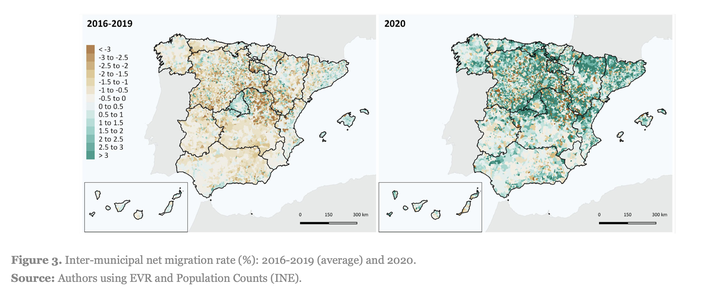
Abstract
After the outbreak of the COVID-19 pandemic, several commentators, especially from non-academic fields, speculated about a potential exodus from urban to rural areas. However, this hypothesis has not been confirmed due to a lack of data with information capturing changes of residence at local level. This issue of Perspectives Demogràfiques offers the main results of a study led by the Centre for Demographic Studies and the Autonomous University of Barcelona which analyses internal migration between cities, suburbs, and rural areas in 2020, compared to migration patterns during the four years preceding the pandemic. The analysis used microdata from the Residential Variation Statistics (EVR) of the Spanish Statistical Office (INE) which cover all changes of residence in the country’s 8,131 municipalities. The results show significant changes in internal migration patterns during 2020. In-migration to cities decreased, while out-migration increased, especially to rural areas. The latter flow had an important demographic impact on country villages. Despite these changes, internal migratory movements between and within urban areas dominated, as they did prior to the pandemic. At the same time, monthly data suggest that the changes are likely a temporary outcome.